Results 6,731 to 6,740 of 12091
Thread: Anandtech News
-
02-16-17, 08:09 AM #6731
Anandtech: AMD & NVIDIA Post GDC 2017 Event Details, Both Holding Events February 28t
Though it feels like we’re barely past CES, things are already quickly ramping up in the PC hardware industry once again. Kicking off in a bit under two weeks is the 2017 Game Developers Conference, taking place as always in San Francisco. While it isn’t a tradeshow in the consumer sense, the conference traditionally draws out the major PC hardware vendors as part of the developer outreach efforts, and this year is no exception.
GDC event details have been posted for both AMD and NVIDIA, whom it turns out are both holding events on February 28th (the day before the expo part of GDC opens). Neither of the vendors have announced their events through their gaming websites or press releases – bear in mind this is a developers’ conference – but both have sent out invites to developers and other GDC attendees.
AMD: Capsaicin & Cream
The sequel to last year’s Capsaicin event, AMD is once again at GDC to talk to developers at their Capsaicin & Cream event. Last year’s event featured the announcement of the developer-focused Radeon Pro Duo, and a new AMD GPU roadmap. AMD’s event description (posted below) is light on details, but of note it appears that AMD will once again be livestreaming the event at 10:30am Pacific.
This year at GDC, join us on the 28th for our Capsaicin livestream and our Cream developer sessions - insightful and inspiring talks focused on rendering ideas and new paths forward, driven by game industry gurus from multiple companies including Epic and Unity.NVIDIA: GeForce GTX Gaming Celebration
The Capsaicin livestream kicks off at 10:30 AM from Ruby Skye, a feature-packed show highlighting the hottest new graphics and VR technologies propelling the games industry forward.
Not to be outdone, NVIDIA is hosting an event at GDC as well, which they’re dubbing their GeForce GTX Gaming Celebration. NVIDIA did not have an event in 2016, while in 2015 the company used the event as the backdrop for the SHIELD TV unveiling (with a surprise GTX 980 Ti announcement the next morning). Like AMD, NVIDIA is being similarly mum about their event, but it’s safe to say it’ll involve GeForce…
Come join us for an evening of awesome PC gaming, hardware, tournaments and of course free food, drinks and a few other amazing surprises.
Doors will open at 6:30 PM and the event will start promptly at 7 PM.
More...
-
02-16-17, 10:16 AM #6732
Anandtech: JapanNext JN-VC490UHD and JN-VC550UHD: 49-55 inch, Curved 4K, FreeSync, HD
JapanNext has started to sell its new ultra-large 49” and 55” curved displays that feature an Ultra HD resolution, a low response time, AMD’s FreeSync dynamic refresh rate technology as well as HDCP 2.2 copyright protection. The monitors are not too expensive: they are currently available for less than $900.
Ultra-large displays are not so common but are not something extremely rare too. For example, companies like NEC offer displays with 40”+ diagonals for professional and industrial applications. Such monitors tend to be too expensive for personal use because they are built according to different standards asking for 24/7 operation and rated for maximum endurance. For many people displays larger than 40” are simply too big, but there are gamers as well as those need to keep a lot of information on their screens, who may want to have a huge monitor. Last year TPV (Philips) introduced two 40” and 43” UHD 4K monitors for prosumers that retail for less than $1000. This month a Japanese company called JapanNext introduced its JN-VC490UHD and JN-VC550UHD monitors that are even larger and support a dynamic refresh rate technology.
The JapanNext JN-VC490UHD (49”) and JN-VC550UHD (55”) displays are based on SVA panels (which may indicate that the manufacturer sources it from Samsung Display) with a 3840×2160 resolution, 250 nits brightness, a 6000:1 contrast ratio, a 60 Hz refresh rate and a 3-4 ms response time. The producer states that the display panels can reproduce 1.07 billion colors (listed online as 10-bit) and are rated to support 99% of the sRGB color gamut, which confirms that we are talking about displays for PCs, not rebadged TVs without a tuner (which would support the NTSC color gamut). The displays use ELED backlighting to ensure “flicker free” operation and JapanNext promote the panels as being 16mm thick.
In a bid to make the JN-VC490UHD and JN-VC550UHD monitors more appealing to gamers, JapanNext equipped the display with AMD’s FreeSync dynamic refresh technology (and there is AMD’s official FreeSync badge on the manufacturer’s website). Unfortunately JapanNext does not declare what refresh range it supports for FreeSync, which may be limited (40/45Hz to 60Hz or similar). Moreover, the units both fully support HDCP 2.2 technology, which is common for monitors, but which is still rare on UHDTVs (given the dimensions of the JN-VC490UHD and JN-VC550UHD, it makes sense to compare them to TVs). Therefore, the 49” and 55” curved UHD displays could be used for Ultra HD Blu-ray playback (but HDR support is not formally declared however).JapanNext's 49" and 55" Curved UHD Displays JN-VC490UHD JN-VC550UHD Panel SVA Native Resolution 3840×2160 Maximum Refresh Rate 60 Hz
Freesync Support, but unknown rangeResponse Time 3 ms 4 ms Brightness 250 cd/m² Contrast 6000:1 Viewing Angles 178°/178° horizontal/vertical Curvature unknown Pixel Pitch 0.2825 mm 0.3171 mm Pixel Density 90 ppi 80 ppi Color Gamut sRGB: 99%
1.07 billionInputs 1 × DisplayPort 1.2
1 × HDMI 2.0
2 × HDMI 1.4
1 × D-SubOutputs 3.5 mm headphone output
SPDIFUSB Hub USB hub (?)
1 × USB Type-A upstream portAudio 6 W × 2
audio in/out portsPower Consumption (idle/active) Idle: 0.5 W
Active: 100 WIdle: 0.5 W
Active: 108 WModes Warm, Cool, Norma, Standard,
Game 1/2/3, Movie, PhotoPrice at Amazon.co.jp ¥82,970 ($725) ¥99,970 ($873)
Connectivity is a yet another interesting peculiarity of the JapanNext displays. The monitors have two HDMI 1.4 inputs that support 3840×2160 resolution at 30 Hz, one DisplayPort 1.2 and one HDMI 2.0 that can both handle 4K at 60 Hz as well as one D-Sub connector (up to 2560×1440). The displays support PiP (picture-in-picture) and PBP (picture-by-picture) modes and some may use it to work with up to four different FHD PCs. As for audio, the displays are equipped with two 6 W stereo speakers, a 3.5-mm audio input, a headphone output and an SPDIF optical output for those who will use them with an audio decoder/receiver.
The ultra-large curved UHD displays for prosumers and gamers from JapanNext will attract attention from many people who primarily need large dimensions. While the pixel density of the JN-VC490UHD and JN-VC550UHD monitors is comparable to that of 24” and 28” FHD screens, it does mean that applications that lack high-PPI settings may not be disadvantaged on the new displays (it depends how close you sit). JapanNext makes no secret that many people will use its new products primarily to enjoy media content in their living rooms: because the TVs have so many inputs, users can attach multiple STBs to them. A bad news is that the devices only have one HDMI 2.0 header, so owners will have to choose whether to plug in one high-end HDMI 2.0 device.
The official price of the JapanNext JN-VC490UHD is ¥99,970 ($873), but Amazon.co.jp offers it for ¥82,970 ($725). The MSRP of the JapanNext JN-VC550UHD is unknown, but it is available for ¥99,970 ($873).
The manufacturer sells some of its displays in Europe via its own website, but the lineup there is not too wide. It is unknown whether JapanNext plans to make its JN-VC490UHD and JN-VC550UHD available outside of Japan.
{gallery: 5479}
Related Reading:
- Philips BDM4037UW Goes on Sale: 40 Inch 4K Curved Display for $800
- Philips Begins to Sell 43” 4K IPS BDM4350UC Display for $799
- Acer Launches Curved XR382CQK Display: 37.5-inch, 3840×1600, FreeSync, & USB-C
- ASUS Announces Designo Curve MX38VQ: 37.5 Inch Curved Display with Qi Charging
- LG 38UC99 Announced: 37.5-Inch Curved 21:9 Display with 3840×1600 Resolution
More...
-
02-16-17, 12:14 PM #6733
Anandtech: ADATA's XPG SX950 SATA SSDs: Up to 960GB, 3D MLC NAND, Six Year Warranty
ADATA has launched a new lineup of its XPG-series SSDs, with the new models featuring 3D MLC NAND flash and targeted at gaming PCs. The new XPG SX950 family drives use a SATA interface and on paper deliver the performance expected mainstream SSDs. The key selling point of the new XPG SX950 products will be their six-year warranty and enhanced endurance ratings.
The ADATA XPG SX950 resembles the company’s Ultimate SU900 drive announced late last year: both come in 2.5” form-factor, are based on the Silicon Motion SM2258 controller (four NAND flash channels, LDPC ECC technology, a DRAM buffer and pseudo-SLC caching support) as well as 3D MLC NAND - we presume from Micron. The XPG SX950 is a bit faster on paper as it supports sequential read speed of up to 560 MB/s as well as sequential write speed of up to 530 MB/s when pseudo-SLC caching is used. As for random performance, the XPG SX950 can perform up to 90K read IOPS and up to 90K write IOPS (see the table for details), which is a listed feature of the controller.
The key advantages of the ADATA XPG SX950 drives are their long warranty as well as endurance/reliability, which is why the manufacturer did not maximize capacities of the SSDs and left some extra memory for overprovisioning. The XPG SX950 family includes 240 GB, 480 GB, and 960 GB models.
The ADATA XPG SX950 SSDs are the fastest SATA drives from ADATA that are rated for 2 million hours MTBF and featuring the longest warranty (six years). ADATA would seem to have maximized the performance of the XPG SX950 vs. predecessors and improved endurance of the products at the same time, in exchange for a small amount of space for provisioning.ADATA XPG SX950 Specifications Capacity 240 GB 480 GB 960 GB Model Number ASX950SS-240GM-C ASX950SS-480GM-C ASX950SS-960GM-C Controller Silicon Motion SM2258 NAND Flash 3D MLC NAND Sequential Read 560 MB/s Sequential Write 520 MB/s 530 MB/s Random Read IOPS Up to 80K IOPS Up to 90K IOPS Up to 90K IOPS Random Write IOPS Up to 90K IOPS Up to 90K IOPS Up to 85K IOPS Pseudo-SLC Caching Supported DRAM Buffer Yes, capacity unknown TCG Opal Encryption No Power Management DevSleep Power Consumption Active: 0.82 W
Slumber: 0.41 WWarranty 6 years MTBF 2,000,000 hours TBW 200 TB 400 TB 800 TB MSRP $139.99 $249.99 $449.99
The ADATA XPG SX950 SSDs are about to hit Amazon/Newegg soon and are expected to be available shortly. MSRPs for 240 GB, 480 GB and 960 GB drives will be $139.99, $249.99 and $449.99, respectively. The recommended prices of the XPG SX950 SSDs are slightly higher than the Ultimate SU900 series. Moreover, prices of the latter have dropped in retail since their announcement in 2016, so the actual difference will be even more significant initially. The slightly higher performance, improved endurance, and a six-year warranty will cost money, but it remains to be seen whether customers are willing to pay significant premiums for SATA drives today.
Gallery: ADATA XPG SX950ADATA XPG SX950, SU800 and SU900 MSRP Comparison 128 GB 256 GB
240 GB512 GB
480 GB1 TB
960 GB2 TB SU800 $59.99 $79.99 $139.99 $269.99 - SU900 - $117.99 $219.99 $409.99 unknown SX950 - $139.99 $249.99 $449.99 - 





Related Reading:
- ADATA Announces Ultimate SU900: 3D MLC NAND, SMI Controller, SATA
- ADATA Launches XPG SX8000: High-End M.2 NVMe SSD Featuring 3D MLC NAND
- ADATA Introduces Ultimate SU800 SSD: SMI Controller, 3D NAND, SATA Interface
- The ADATA Ultimate SU800 SSD Review (128GB, 256GB, 512GB)
More...
-
02-17-17, 09:06 AM #6734
Anandtech: Previewing Silicon Motion SM2260 NVMe Controller With 3D MLC NAND (512GB)
Silicon Motion's SM2260 is their first NVMe PCIe SSD controller. We've already reviewed the Intel SSD 600p using this controller and 3D TLC NAND. This review tests an engineering sample of Silicon Motion's reference design pairing SM2260 with Micron's 3D MLC NAND, a combination used in ADATA's XPG SX8000 and Mushkin's upcoming Helix SSD.
More...
-
02-17-17, 10:22 AM #6735
Anandtech: ELSA Launches a Single-Slot GeForce GTX 1050 Ti 4 GB SP
ELSA has announced a new graphics card with a single-slot cooling system. The GeForce GTX 1050 Ti 4 GB SP can fit into tightly packed PCs and does not require any auxiliary power connectors. The product will be available only in Japan so far and it is unknown whether it will ever make it to other markets.
Over the past few months, we have seen multiple modern graphics cards designed for Mini-ITX and even low profile PCs. However, single-slot consumer add-in-boards (AIBs) these days tend to be rare, possibly because the vast majority of contemporary motherboards and chassis are designed to have enough space for installation of mainstream adapters that are two slots wide. Both AMD and NVIDIA offer professional graphics adapters (e.g., Quadro M4000, Radeon Pro WX7100 and so on) with single-slot coolers assuming that workstations could be packed very densely. Back in December, GALAX demonstrated a GeForce GTX 1070-based AIB with a single-slot cooling system, but that card was intended only for China. This week ELSA announced a slim GeForce GTX 1050 Ti-based product for Japan.
The ELSA GeForce GTX 1050 Ti 4 GB SP graphics card is powered by NVIDIA’s fully-fledged GP107 GPU (768 stream processors, 48 texture units, 32 ROPs) and uses a PCB with the NVIDIA name on it. The latter may indicate that the AIB is based on a reference design of the GPU developer and ELSA sources the PCB from an NVIDIA-approved manufacturer (or buys both GPU and PCB from the Santa Clara-based company). The card runs at frequencies recommended by NVIDIA (1290/1392 MHz base/boost) and is equipped with 4 GB of GDDR5 memory operating at 7000 MT/s. Just like numerous other GeForce GTX 1050 Ti cards, the model from ELSA consumes no more than 75 W and does not need auxiliary PCIe power connector.
Apart from being thin, the cooling system of the device is nothing out of the ordinary. It uses an aluminum heatsink (possibly with a base made of copper), one large fan and is encased in a metallic enclosure. The rotating speed of the fan is unknown, so no word on loudness. As for connectivity, despite its single-slot form factor, the ELSA GeForce GTX 1050 Ti 4 GB SP offers all three essential outputs: an HDMI 2.0b, a DisplayPort 1.4 as well as a dual-link DVI-D.
ELSA plans to start sales of the GeForce GTX 1050 Ti 4 GB SP graphics adapter on February 24, 2017. The company did not announce price, but it is likely that it will be close to NVIDIA’s recommendations for Japan. As for availability of the product in other countries, it might be possible that other manufacturers which use NVIDIA-designed PCBs for their GeForce GTX 1050 Ti products might adopt single-slot coolers as well. If not, Amazon.co.jp can ship the ELSA card worldwide (make note of import taxes).
Gallery: ELSA GeForce GTX 1050 Ti 4 GB SP




Related Reading:
- GALAX Shows Off Single-Slot GeForce GTX 1070 Graphics Card
- Palit Announces KalmX: A Passively-Cooled GeForce GTX 1050 Ti Graphics Card
- GIGABYTE Quietly Launches Low Profile GeForce GTX 1050, 1050 Ti Graphics Cards
More...
-
02-17-17, 04:49 PM #6736
Anandtech: HTC to Exit Entry-Level Phone Market Later This Year
In the highly competitive smartphone industry it’s easy enough to make a name for yourself, but it’s a lot harder to make a profit while doing so. Apple and Samsung have long captured the lion’s share of the profits thanks to their flagship smartphones, which has forced the other handset vendors to fight for their own market share and profits. Due to the success of the duo, rival vendors have been focusing on an area where those companies are not as entrenched in (or not present at all in): the entry-level phone market. This is the traditional volume play, and while it can be profitable on the whole, the razor-thin margins and heavy competition from other vendors make it a similarly tough environment. And now it looks like there will be one less vendor competing in that market, as HTC has let it known that they will be exiting the market for entry-level phones.
Earlier this week in the company’s quarterly earnings call, in a bit of a blink-and-you’ll-miss-it moment that the crew over at Phone Scoop picked up on, HTC announced that they would be leaving the entry-level phone market over the year in order to focus on more profitable segments of the smartphone market. Undertaking what amounts to a gradual draw-down, HTC is not discontinuing any phones or discontinuing support for those phones, but they will no longer be developing phones for the entry-level segment. Which means that when phones like the Desire 10 series reach the end of their natural retail lifetime, HTC will not be replacing them with newer models.
HTC’s struggles with profitability over the years are well known. While the company is and continues to be a major player in the smartphone market, they have been squeezed on all fronts; Apple and Samsung split the bulk of the high-end market, and meanwhile the company faces extremely stiff competition at the entry-level from Chinese OEMs, whom are very difficult to compete with on price. As a result, rather than trying to make the volume play work with the entry-level market, HTC has decided to focus on the more profitable mid-range and high-end markets.
The challenge now for HTC will be clawing market share from Samsung and other vendors in those more profitable spaces. While the mid-range and high-end markets are easier to make a profit in – consumers aren’t so price sensitive and there’s more to a phone’s price than just its bill of materials – it’s still a difficult task since vendors still need to move phones in some volume in order to cover the R&D costs of these better phones. The good news for HTC is that the company appears to be on the right path in terms of handset design after the HTC 10, but and the end of the day they still need to overcome consumer inertia and convince potential customers to leave Apple/Samsung.
Finally, HTC’s exit of the entry-level market means that the company expects to introduce “six or seven” new phones for 2017. We’ve already seen their first two phones with the HTC U Play and HTC U Ultra, which were introduced at CES and will be aimed at the mid-range and high-end markets respectively, and these will be joined by other phones throughout the rest of the year.
More...
-
02-18-17, 10:13 AM #6737
Anandtech: Intel Announces Cyclone 10 FPGAs for IoT Devices
Intel this week has announced its new portfolio of FPGAs designed for small form-factor and/or low-power Internet-of-Things devices, specifically in the fields of automotive, industrial, audio/visual and vision applications. The Cyclone 10 GX and Cyclone 10 LP FPGAs formally belong to a single family of products, but both have different capabilities and were developed for different needs.
The Intel Cyclone 10 GX FPGAs are designed for applications that need relatively high performance (up to 134 GFLOPS, IEEE 754 single-precision) and advanced I/O capabilities. The new FPGAs contain up to 220,000 logic elements, up to 80,330 adaptive logic modules (ALMs) with 8-input look-up tables (LUT), support 10 G transceivers as well as a PCIe 2.0 x4 IP block to connect to CPUs and other devices. Among devices that will use the Cyclone 10 GX FPGAs Intel names industrial machine vision, smart city surveillance, video streaming, robotics, machine tools and other devices. The 10 GX family is made on TSMC's 20nmSoC planar process, in line with what we perhaps expect as Intel is working through Altera roadmaps set before the acquisition.
By contrast, the Intel Cyclone 10 LP FPGAs are aimed at low-power/low-cost applications, such as sensor fusion, motor controls, interfacing, I/O expansion for CPUs and so on. For example, if an application needs to combine data from multiple sensors, the Cyclone 10 LP will do the job, but the actual processing will be performed by something more powerful. The FPGAs contain 6,000 – 120,000 logic elements, DSP blocks (up to 288 18x18 multipliers), integrated PLLs, 65 – 230 LVDS channels and so on.
Both families of the Cyclone 10 FPGAs are compliant with the IEC 61508 machinery directive safety standard (in fact, Intel says that it is the first FPGA vendor to obtain the appropriate device and tool qualification), which in case of a chip probably indicates its reliability during continuous operation.
Intel’s Cyclone 10-series FPGAs, as well as evaluation kits and boards on their base, will be available in the second half of 2017. In addition to hardware, Intel also plans to release its Quartus programming software that supports the new FPGAs.Intel Cyclone 10 FPGAs Cyclone 10 GX Cyclone 10 LP Logic elements (LEs) 85,000 - 220,000 6,000 - 120,000 Adaptive logic modules (ALMs) 31,000 - 80,330 - ALM registers 124,000 - 321,320 - Variable-precision DSP blocks 84 - 192 - 18 x 19 multipliers 168 - 384 - 18 x 18 multipliers - 15 - 288 Peak fixed-point peformance (GMACS) 151 - 346 - Peak floating-point performance (GFLOPS) 59 - 134 - Voltage Core voltage: 0.9 V
I/O Voltage: Various1.0 and 1.2 V Process Technology 20 nm (TSMC CLN20SOC) unknown I/O Global clock networks 32 10 - 20 Maximum user I/O pins 192 - 284 176 - 525 Maximum LVDS pairs 1.4 Gbps (RX or TX) 72 - 118 Maximum LVDS channels - 65 - 230 Maximum transceiver count (10.3 Gbps) 4 - 12 - Maximum 3V I/O pins 48 - PCIe 2.0 x4 hard IP blocks 1 - Memory devices supported DDR3, DDR3L, LPDDR3 - Packaging E144 pin - 22 x 22 mm, 0.5 mm pitch M164 pin - 8 x 8 mm, 0.5 mm pitch U256 pin - 14 x 14 mm, 0.8 mm pitch U484 pin 19 x 19 mm, 0.8 mm pitch F484 pin - 23 x 23 mm, 1.0 mm pitch F672 pin 27 x 27 mm, 1.0 mm pitch F780 pin 29 x 29 mm, 1.0 mm pitch
Related Reading:
- Intel to Acquire FPGA-Specialist Altera for $16.7 Billion
- Xilinx Launches Cost-Optimized Portfolio: New Spartan, Artix and Zynq Solutions
- Computex 2016: Intel Keynote Live Blog at 2pm TPE (2am EDT)
More...
-
02-18-17, 01:26 PM #6738
Anandtech: MSI Adds Low-Profile AMD Radeon RX 460 Graphics Cards to Lineup
MSI has quietly added two low-profile AMD Radeon RX 460 graphics adapters to its product family. The add-in-boards (AIBs) are powered by AMD’s latest entry-level GPU, Polaris 11. As these are base RX 460 models. they do not require PCIe power and are compatible with a wide range of computers that have enough space for a dual-slot card. The new adapters will be among the most affordable discrete graphics options today and will be aimed at those upgrading entry-level systems as well as building SFF HTPCs.
The MSI Radeon RX 460 4GT LP and Radeon RX 460 2GT LP are based on AMD’s Baffin (Polaris 11) graphics chip (896 stream processors, 56 texture units, 16 raster operations pipelines, 128-bit memory bus) clocked at up to 1.2 GHz (base/boost) and carry 2 or 4 GB of GDDR5 memory at 7 Gbps. As for connectivity, the boards have one DL-DVI-D and one HDMI 2.0 output with HDCP 2.2 support (HDCP 2.2 is required for playback of protected UHD video). When it comes to cooling, the AIBs use dual-slot cooling systems with two fans, the same as the company installed on other low-profile graphics cards. As an added bonus, MSI states that it uses MIL-STD-810G certified components to ensure a long lifespan for its LP adapters.
Over the past couple of months, MSI and a number of other companies (GIGABYTE, GALAX) have introduced low-profile graphics adapters based on NVIDIA’s GPUs - MSI is one of the first with similar LP RX 460 cards and extending its range of contemporary LP AIBs to four models. The addition of two low-profile cards to the lineup may indicate that demand for such products is relatively significant and rather stable.
Both AMD Polaris 11 (Baffin) and NVIDIA GP107 GPUs outperform integrated graphics cores of mainstream desktop CPUs and also support modern functionality like DirectX 12 and Vulkan APIs. Furthermore, the two graphics processors support hardware-accelerated decoding and encoding of HEVC (H.265) and VP9 video at 4Kp60 as well as HDR10. Finally, the GPUs consume up to 75 W of power and do not need any auxiliary PCIe power connectors, which makes them compatible with virtually all modern PCs with a PCIe 3.0 x16 slot, including those from various large brands that sometimes do not have any spare connectors left.
MSI has not announced MSRPs forthe new cards, and since the AIBs were added to the company’s product family in the last week, they are no yet available at Amazon or Newegg. Given the positioning of the adapters, it is unlikely that their price will be substantially different from $109 (2 GB version) and $139 (4 GB version) recommended by AMD.MSI's Radeon RX 460 Low Profile Graphics Cards RX 460 4GT LP RX 460 2GT LP GPU AMD Polaris 11 (Baffin) Stream Processors 896 Texture Units 56 ROPs 16 Core Clock (MHz) 1090 Boost Clock (MHz) 1200 Memory Capacity 4 GB 2 GB Type GDDR5 Clock 7 Gbps Bus Width 128 bit Outputs DisplayPort 0 DVI 1 × DVI-D HDMI 2.0b 1 TFLOPS (FP32) 1.95 TDP 75 W Launch Date 2/2017 2/2017
Gallery: MSI Radeon RX 460 4GT LP



Related Reading:
- MSI Adds Low-Profile GeForce GTX 1050 Ti to Lineup
- GALAX Launches Low Profile GeForce GTX 1050 OC and 1050 Ti OC
- GIGABYTE Quietly Launches Low Profile GeForce GTX 1050, 1050 Ti Graphics Cards
More...
-
02-21-17, 06:40 AM #6739
Anandtech: Qualcomm Announces Snapdragon X20 LTE Modem & New RF Front-End Modules For
Qualcomm announced its first LTE Advanced Pro modem, the X16 LTE, last February, supporting downlink speeds of up to 1.0 Gbps. Today the company announced its second-generation gigabit class LTE modem, the Snapdragon X20 LTE, along with some new RF front-end components.
The Snapdragon X20 LTE modem will use Samsung’s latest 10nm LPE process and offer a few key enhancements over the X16 LTE modem integrated into the Snapdragon 835 SoC. First, the X20 gains support for 5x carrier aggregation (5x20MHz), allowing for more flexible use of available licensed and unlicensed spectrum with over 1000 possible carrier aggregation band combinations. It also increases the number of usable spatial streams from 10 to 12 by performing 4x4 MIMO on three aggregated carriers. These improvements allow the X20 to support UE Category 18 on the downlink, boosting peak theoretical bandwidth to 1.2 Gbps, a 20% improvement over the X16 LTE modem. Uplink bandwidth remains the same, however, supporting up to 150 Mbps with 2x20MHz carrier aggregation and 64-QAM.
Improving performance was not Qualcomm’s primary goal for X20, though; by supporting 5x carrier aggregation (CA) and Licensed Assisted Access (LAA), an LTE Advanced Pro feature that allows CA of licensed and unlicensed spectrum (5 GHz) on the downlink, the X20 allows network operators to deploy gigabit LTE service with only 10MHz of licensed spectrum. This is vitally important in many crowded markets where 20MHz blocks are rare. According to a Strategy Analytics study, 64% of network operators around the globe can deploy gigabit LTE using 20MHz CA and LAA, the configuration offered by the Snapdragon X16 LTE modem. This number increases to 90% when using 10MHz CA and LAA, making gigabit LTE a viable bridge to 5G.
The Snapdragon X20 and X16 LTE modems share several features, including LTE Broadcast and Ultra HD Voice quality using the EVS codec. Both modems also support Citizens Broadband Radio Service (CBRS) in the US, a 150MHz slice of shared spectrum in the 3.5GHz band that can be used by operators for gigabit LTE service or even private LTE networks for industrial or large-campus applications.Qualcomm Snapdragon 4G LTE Modems (High-End) Modem Snapdragon X20 LTE Snapdragon X16 LTE Snapdragon X12 LTE SoC
DiscreteN/A
yesSnapdragon 835
yesSnapdragon 820/821
yesUE Category Cat 18 DL
Cat 13 ULCat 16 DL
Cat 13 ULCat 12 DL
Cat 13 ULPeak Bandwidth 1.2 Gbps DL
150 Mbps UL1.0 Gbps DL
150 Mbps UL600 Mbps DL
150 Mbps ULCA Config 5 x 20MHz DL
2 x 20MHz UL4 x 20MHz DL
2 x 20MHz UL3 x 20MHz DL
2 x 20MHz ULMIMO 4x4 (3 CA) 4x4 (2 CA) + 2x2 (1 CA) 4x4 (1 CA) Max Spatial Streams 12 10 6 Modulation 256-QAM DL
64-QAM ULCellular Technologies LTE FDD / LTE TDD / LTE-U / WCDMA / TD-SCDMA / CDMA / GSM Additional Features LAA, CBRS, VoLTE, EVS, Wi-Fi calling, Dual SIM Dual Standby, Dual SIM Dual Active, Dual SIM Dual VoLTE LAA, CBRS, VoLTE, EVS, Wi-Fi calling, Dual SIM Dual Standby, Dual SIM Dual Active VoLTE, EVS, Wi-Fi calling, Dual SIM Dual Standby Mfc. Process 10nm LPE 10nm LPE / 14nm LPP 14nm LPP
One new feature exclusive to the X20 is Dual SIM Dual VoLTE (DSDV), a technology that will help carriers transition away from legacy GSM networks. With DSDV the second SIM is no longer limited to 2G or 3G voice duties, because voice can be carried over LTE. It also allows the user to select either SIM for LTE data service.
Like previous Qualcomm LTE modems, the Snapdragon X20 will be offered as a stand-alone product initially, but will likely be integrated into a high-end Snapdragon SoC next year. Qualcomm has begun sampling the new modem to customers and expects the first commercial devices to appear in the first half of 2018.
New RF Front-End (RFFE) Components
Qualcomm also added several new products to its RF360 portfolio, including several new power amplifier modules and its next-generation TruSignal solution. The new components promise to reduce power consumption and improve signal quality, leading to better battery life and more consistent cellular performance under a broad range of conditions. They also adhere to Qualcomm’s philosophy of creating highly integrated RFFE components that reduce part count and simplify RF design for OEMs.
The four new multimode, multiband power amplifier (MMPA) modules—QPA5460, QPA5461, QPA4360, QPA4361—are the first from Qualcomm to use GaAs as opposed to CMOS, which brings certain advantages when working with higher frequencies. The primary difference between the QPA54xx parts and the QPA43xx parts is that the former uses envelope-tracking when paired with a QET4100 envelope tracker IC and provides better power efficiency for LTE TDD networks, while the latter is optimized for average power tracking. All four MMPA modules combine switches with low, mid, and high band power amplifiers into a tightly integrated package.
Qualcomm also released the D5328 Integrated Front-End Module (FEMiD) and D5285 Diversity Receive Module (DRX), both of which increase RFFE integration. The D5328 FEMiD combines layer-transfer switches, certain filters, duplexers, and a quadplexer into a single module, while the D5285 DRX is a similar part for the diversity receive path.
Qualcomm’s latest TruSignal adaptive antenna tuning solution, which combines the QAT3550 impedance tuner, QAT3514 aperture tuner, and QAT3522 antenna diversity switch, is the first to support carrier aggregation. The components work together with the modem, which provides advanced signal processing, in a closed-loop system to ensure optimal signal quality. The third-generation QAT3550 is 30% smaller than the second-generation QFE2550 impedance tuner, and all three QAT35xx parts can be used in conjunction with the Snapdragon 835 SoC.
More...
-
02-22-17, 08:47 AM #6740
Anandtech: AMD Launches Ryzen: 52% More IPC, Eight Cores for Under $330, Pre-order To
The biggest x86 launch for AMD in five years is today: Ryzen is here. As always before a major launch, AMD gives a ‘Tech Day’ for relevant press and analysts, and through this event AMD’s CEO, Dr. Lisa Su lifted the lid on one of the most anticipated products in the semiconductor industry. AMD knows how to control the level of enthusiasm for its fans, and today is the end result, with processors going on pre-order from major retailers today, ready for a general hard launch on March 2nd.
In a similar vein to launches of recent smartphones, AMD is doing a staggered announcement/launch with the products on their new microarchitecture. Where Samsung/Apple might give all the details for a product a few weeks before it’s available to buy, today on February 22nd marks the day where AMD is giving consumers information about Ryzen, and specifically the Ryzen 7 family of eight-core products. All the information today is from AMD, and AMD’s internal testing, and pre-orders also start from today for users ready to put down their money for a launch day part. Reviews of the CPUs, as well as when the CPUs will ship to customers, is on March 2nd. This also happens to be right in the middle of two annual shows, Game Developer Conference (GDC) and Mobile World Congress (MWC), making the time between receiving pre-launch samples and being able to provide independent verification of AMD’s performance claims relatively frantic. We’ll do our best!
The Ryzen Family
With a new processor launch, naming the parts and positioning them within the market is critical. So with Ryzen, the processor stack will be split into three based on performance and price: Ryzen 7 at the high end, Ryzen 5 in the middle, and Ryzen 3 for more price-conscious consumers. Both Ryzen 5 and Ryzen 3 are set to be launched later, and Ryzen 7 is the first portion of the family to be released.
Ryzen 7 will have three CPUs to start, all having eight cores and supporting simultaneous multi-threading:
- Ryzen 7 1800X: 8C/16T, 3.6 GHz base, 4.0 GHz turbo, 95W, $499
- Ryzen 7 1700X: 8C/16T, 3.4 GHz base, 3.8 GHz turbo, 95W, $399
- Ryzen 7 1700: 8C/16T, 3.0 GHz base, 3.7 GHz turbo, $329
Ryzen 7 1800X will be the high-end part, featuring a base clock of 3.6 GHz and a turbo of 4.0 GHz, within a TDP of 95W, and for $499. Next to this is Ryzen 7 1700X, launching at $399, with a base/turbo of 3.4/3.8 GHz. The final part for the launch is the Ryzen 7 1700, providing eight cores and sixteen threads for $329 at 3.0/3.7 GHz frequencies.
Processors will initially be available for pre-order from 185 retailers and OEMs worldwide, either as individual parts or pre-built systems.
What, not 40% IPC? 52% IPC??
Enthusiasts and analysts use the term IPC, or ‘Instructions Per Clock’, as a measure of how much the underlying microarchitecture improves from generation to generation. Two decades ago, a good design on a smaller node could net a healthy double-digit gain, whereas in recent years 5-10% gain has become the norm. When AMD initially announced that the new Zen microarchitecture they were developing was aiming for a 40% IPC gain, despite the low IPC they were starting from, users remained skeptical. AMD rehired Jim Keller to work alongside long-term AMD architect Mike Clark and produce a team with several goals in mind: high-performance x86, simultaneous multithreading, and a product to be relevant in the computing, PC, server and mobile space again. So despite this, 40% IPC always seemed a somewhat lofty goal, because Bulldozer was so underwhelming, and despite this low starting point. For the Ryzen launch today, AMD is stating that the final result of that goal is a 52% gain in IPC.
This is something we will need to test in due course!
The Ryzen Silicon, and the Future
AMD pointed out that the new 8-core silicon design runs 4.8 billion transistors and features 200m of wiring. Through previous announcements we’ve examined parts of the microarchitecture including cache sizes, threading, front-end/back-end design, and so on.
AMD Zen Microarchiture Part 2: Extracting Instruction-Level Parallelism
AMD Gives More Zen Details: Ryzen, 3.4 GHz+, NVMe, Neural Net Prediction, & 25 MHz Boost Steps
AMD’s CEO was keen to point out that this is a from-scratch design for AMD, using the knowledge gained from features developed for previous products but ultimately under the hood it looks like ‘a typical x86 high-performance core’, with AMD-specific features and tweaks. We were told that AMD’s roadmap extends into the multi-year range, so while the focus for 2017 will be on this family of products, back at HQ the next two generations are in various stages of development.
BENCHMARKS PLEASE
So despite the 82+ motherboards going to be available, 19 initial PC system builders moving into 200+ through the first half of 2017, the big question on everyone’s lips is how exactly does it perform?
Well, AMD gave us the following numbers:
AMD's benchmarks showed that the top Ryzen 7 1800X, compared to the 8-core Intel Core i7-6900K, both at out-of-the-box frequencies, gives an identical score on the single threaded test and a +9% in the multi-threaded test. AMD put this down to the way their multi-threading works over the Intel design. Also, the fact that the 1800X is half of the price of the i7-6900K.
In a similar vein, again with the Cinebench 15 multi-threaded test, the Ryzen 7 1700X scores over and above the Core i7-6800K (its price competition) and higher than the Core i7-6900K which costs 2.5 times as much.
We’ll tell you what our benchmarks say, with official retail processors. But you will have to wait until March 2nd. Sorry.
More...
Thread Information
Users Browsing this Thread
There are currently 17 users browsing this thread. (0 members and 17 guests)






 Quote
Quote

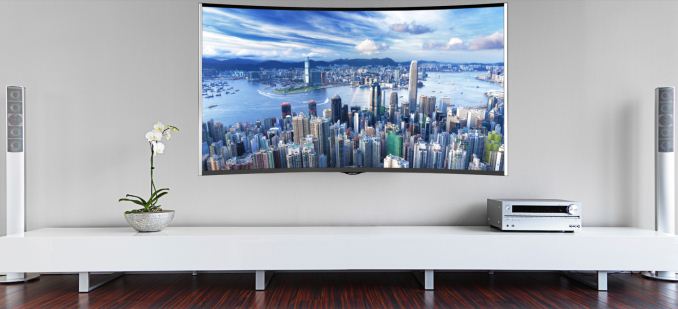
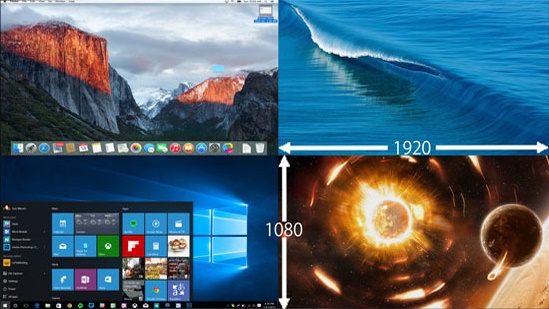
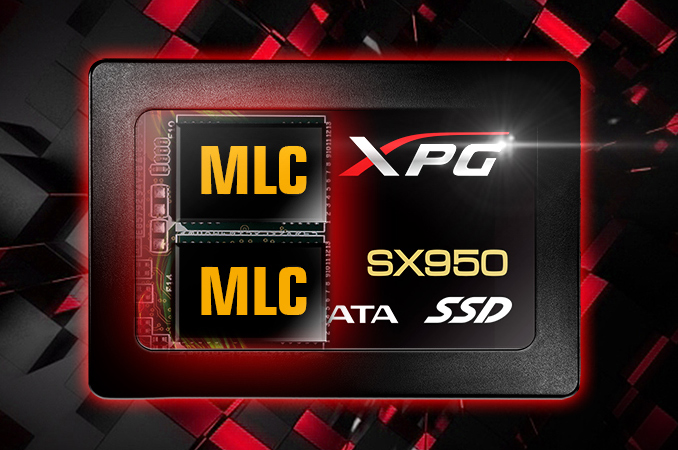

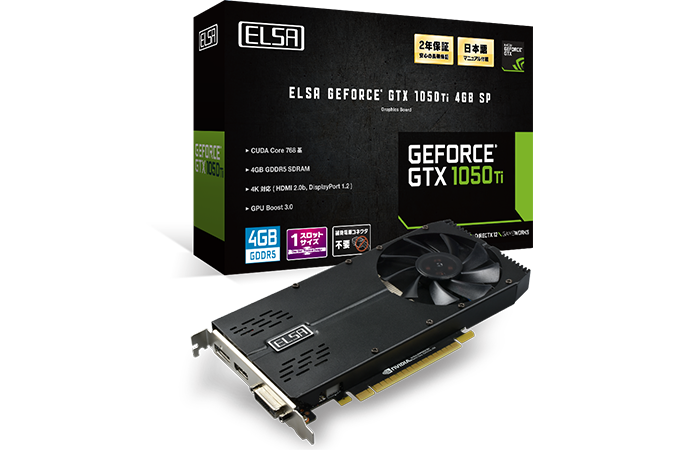



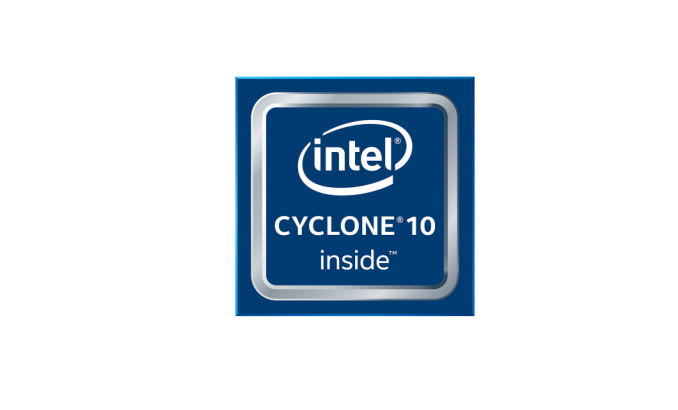
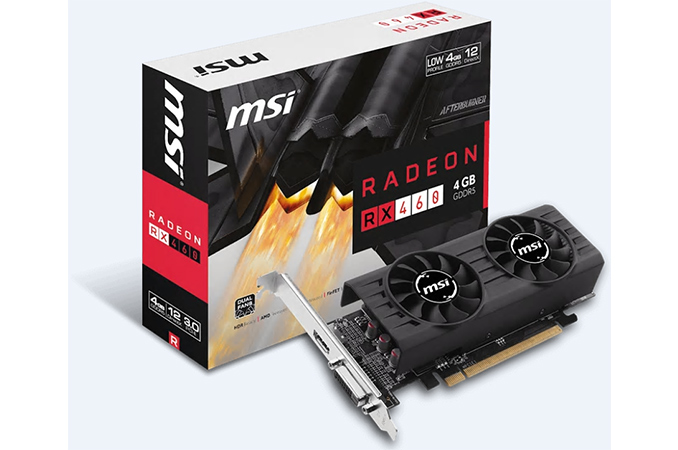
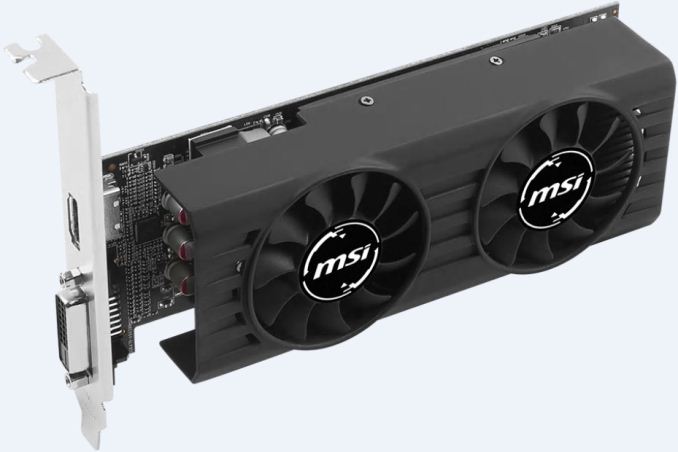
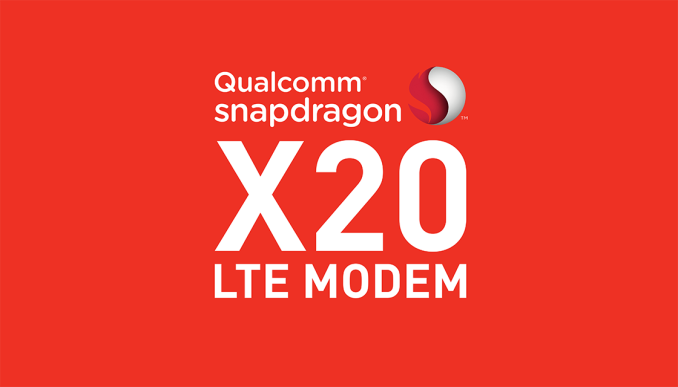
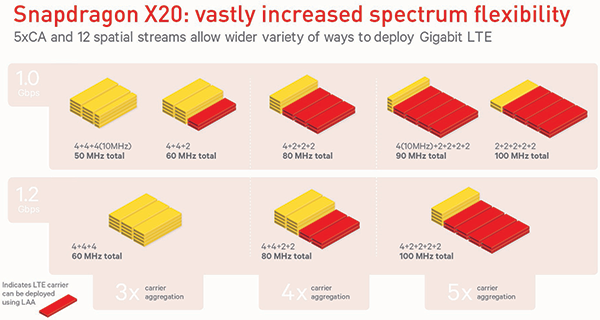
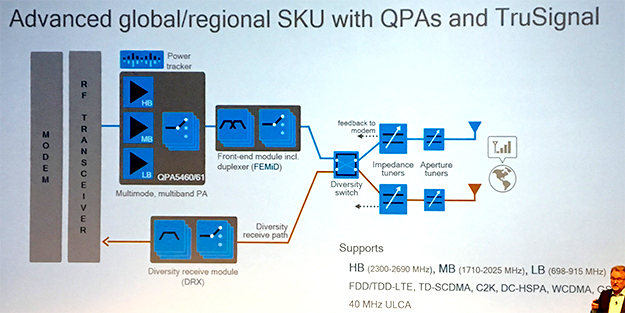






















Bookmarks